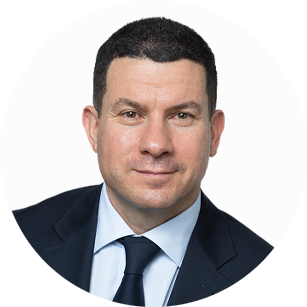Fixed assets, also known as tangible, long-lived or long-term assets, are properties that a business invests in that provide it with economic benefits over a long period of time. They are often assets that help the business improve its productivity, quality, revenue, etc.
As a business owner, it’s crucial that you partner with an experienced tax accountant in Toronto who is an expert in tax reporting and can help ease your mind knowing that a tax specialist is handling your tax reporting and allows you to focus on more lucrative business activities.
The right CPA can also help you find other ways to save money that can increase your bottom line, assist you with tax planning that reduces your overall tax expense, and help you plan the strategic growth of your business.
What are Fixed Assets?
As the name implies, fixed assets are those that are physical and relatively permanent. A good way to properly categorize what is eligible capital property is to think of it as property or assets that don’t move like a building, land and heavy machinery. Other examples include:
- Real estate owned by the business
- Business vehicles
- Computers, office equipment and furniture
- Improvements and upgrades to structures and property
- Tools and equipment
Fixed assets are those whose lifespan lasts longer than a fiscal year of 12 months. Aside from helping a business with its operations or profitability, because they are investments, sometimes long-term ones like land, fixed assets can help a business increase its value.
This is important when it comes to valuing the business if it needs to raise capital through investment or financing. Fixed assets in a balance sheet provide investors with a little more confidence that even if the business fails, they may still be able to recoup some of their investment through the liquidation of the business’s fixed assets. The same is true for business loans, as fixed assets are often used as collateral. They can even be sold by the business if it needs cash. Doing so, however, will also provide the business with the proceeds of the disposition of property that can result in a massive uptick in its Canada property capital gains tax.
Fixed Assets vs Current Assets
As a point of differentiation, in case you’re unsure if an asset is fixed, current assets are those that are generally used during the course of the fiscal year and can include:
- Cash and short-term investments such as securities, treasury bills and others that are easily convertible to cash
- Accounts receivable
- Inventory
- Prepaid expenses
While it may take time to collect on accounts receivable or sell off inventory, they are still considered current assets as they, like other current assets, are typically consumed, replaced or converted into cash in a 12-month accounting cycle.

What is Depreciation of Fixed Assets?
Because fixed assets, like buildings, equipment and vehicles, are major investments that require large capital investments, often through financing, it’s vital to know their value every year. The value of fixed assets decreases over time after their initial purchase, mainly due to wear and tear as it is used. Depreciation represents an estimate of how much a fixed asset’s value has declined in a given fiscal period.
Because this loss in value of a major asset (and investment) also impacts the value of the business, the CRA allows businesses to claim a tax deduction based on the diminishing value of fixed assets over time. Businesses, however, are not allowed to claim depreciation of the full value of the asset in the year it was purchased. Their value is based on a longer period of time, known as the asset’s ‘expected useful life.’
Fixed assets are divided into classes by the CRA, and each class has a specific depreciation rate assigned to it which is referred to as a capital cost allowance. There are numerous classes with varying cost allowances, so be sure to check out this CRA website to know how to properly classify and depreciate a fixed asset.
From an accounting perspective, when the cost is registered on an income statement, the asset’s value on the asset balance sheet also decreases. This continues over the asset’s expected useful life until the value of the asset is completely expensed or it’s sold or discarded.
How to Calculate Depreciation on Fixed Assets
Aside from knowing the capital cost allowance of a particular fixed asset, it is crucial to know how to properly calculate an asset’s depreciation. There are several methods for calculating asset depreciation; however, the two most common are the straight-line method and the declining balance method.
Although the CRA places restrictions on how the capital cost allowance can be calculated and used on a tax return, they do provide business owners with some flexibility on how much of the allowance on a given fixed asset they use in a given tax reporting year, allowing them to accelerate or defer depreciation to reduce their tax liability.
The Straight-Line Method of Depreciation
Using the straight-line method, an asset’s depreciation is calculated at the same dollar amount every year.
The Declining Balance Method of Depreciation
With the declining balance method of depreciation, an asset’s depreciation is calculated using the same rate (percentage) every year. This method results in an asset losing much more value at the beginning of its useful life, which is a more accurate reflection of how an asset depreciates over time. Think of the cliché regarding the purchase of a new car that loses half its value as soon as you drive it off the car lot.
The Bottom Line on Fixed Assets
if you’re ever unsure about how to report the value of a fixed asset, its capital cost allowance or any other aspect of your tax return, reach out to one of our experienced CPAs. It’s not worth the risk of guessing or basing your tax return on what you read online.




